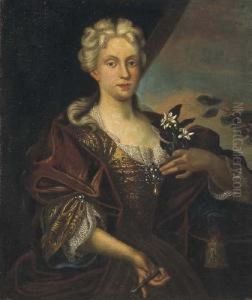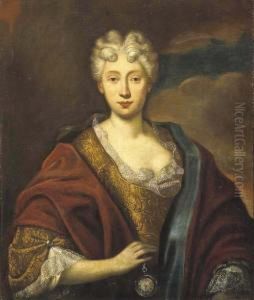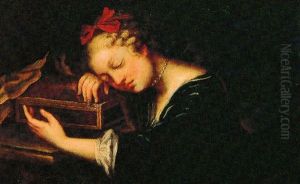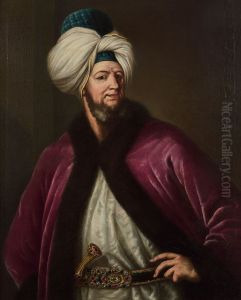Violante Beatrice Siries Paintings
Violante Beatrice Siries was a distinguished Italian painter and miniaturist, born in 1709 in Florence, Italy. She was part of the vibrant artistic scene of the 18th century, a period that witnessed the flowering of the Baroque and Rococo styles in European art. Siries came from a family deeply involved in the arts; her father, Livio Siries, was a respected painter and art dealer, which provided her with an environment rich in artistic influence and opportunities from an early age.
Her education in the arts was comprehensive, encompassing painting, drawing, and the delicate art of miniature painting, which was highly fashionable among the European aristocracy of the time. Siries quickly established herself as a talented artist, gaining recognition for her portraits and historical subjects. Her skill in capturing the likeness and character of her sitters, along with her adept use of color and light, made her works sought after by the elite of Florence and beyond.
In 1730, at the age of 21, Siries took a significant step in her career by moving to Paris. This move was pivotal, as Paris was then one of the centers of the European art world. There, she studied under the renowned French painter Jean-Marc Nattier, who was known for his exquisite portraits of the French nobility. Under Nattier's guidance, Siries honed her skills and expanded her artistic repertoire, absorbing the French Rococo influences that would become evident in her later works.
Violante Beatrice Siries' career flourished in Paris, and she became well-known among the French aristocracy and intellectual elite. Her success in France was marked by her admission to the prestigious Académie Royale de Peinture et de Sculpture in 1753, an extraordinary achievement for a woman artist at the time. This recognition was not only a testament to her talent and skill but also to her ability to navigate the male-dominated world of 18th-century European art.
Returning to Florence later in her career, Siries continued to paint, teach, and influence the next generation of artists. She established an art school for women, a pioneering move that opened up new opportunities for female artists in Italy. Siries' legacy is not only in the beautiful works she left behind but also in her role as a mentor and advocate for women in the arts.
Violante Beatrice Siries died in 1783 in Florence, leaving behind a body of work that continues to be admired for its elegance, technical skill, and historical importance. Her life and career stand as a testament to the challenges and achievements of women artists in the 18th century.



